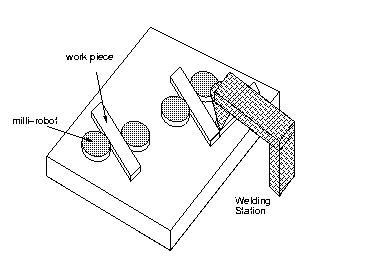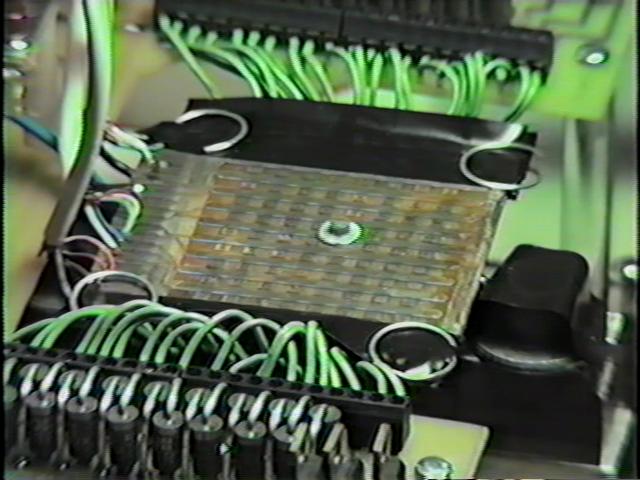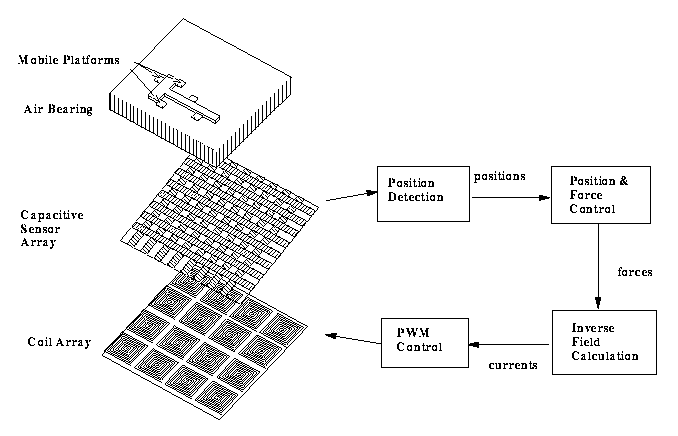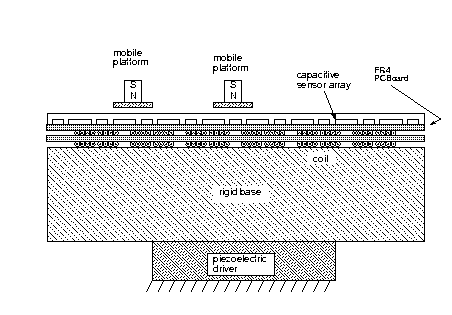
Generic model of miniature planar robotic workcell. The goal is to build a system on which miniature parts can be transported, tested, and assembled.

1995 version with squeeze film air bearing, magnet array, and integrated capacitor sensing.


 A Planar Milli-Robot System on an Air
Bearing (Postscript) (Printer
Dependent Format)
A Planar Milli-Robot System on an Air
Bearing (Postscript) (Printer
Dependent Format)